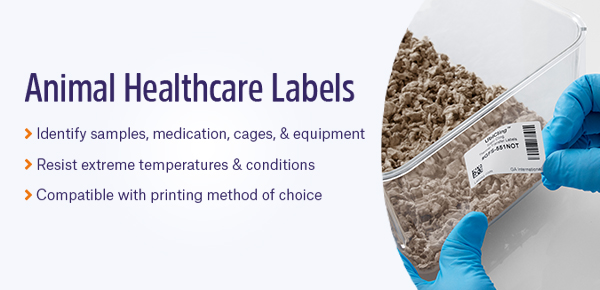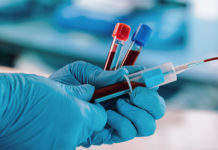
The use of veterinary diagnostics is growing, fueled by the need to control and prevent diseases and to better understand the creatures we depend on. Proper diagnosis is important, as even a small outbreak can threaten an entire animal community. Veterinarians have begun to employ a variety of diagnostic tools that can provide complete and robust results in less than 24 hours or even during the course of the initial examination of the animal.
Growth & development of veterinary diagnostics
The veterinary science lab provides a secure medical testing facility where animal fluids and tissue samples can be analyzed to monitor disease progression or response to therapy. This can also reveal the presence of underlying disease in otherwise healthy animals and livestock. These labs can test for toxins or agents in animal diagnostic samples, with special testing centers available that focus on a particular method or field, including pathology, bacteriology, toxicology, nutrition, and virology. The data generated from these tests can then be used to help create new drugs or vaccines, as well as to formulate new protocols and guidelines for animal movement and nutrition.
The demand for new diagnostic kits has also led to improved testing efficiency and reduced analysis time. They include refrigerated kits for activated clotting time in dogs and cats, non-refrigerated test kits for urine testing, and parasite detection systems. These modern diagnostic kits are accurate, easy to track and provide valuable data on animal tissue samples, blood, or urine that helps track disease and prescribe drugs and vaccines to sick animals.
According to some estimates, the global veterinary diagnostics market is expected to grow substantially over the following years, reaching somewhere between $3.6B and $6.5B by 2022. This can largely be attributed to the rising animal population, including a growing population of livestock, increased pet adoption, and animal healthcare costs, as well as growing animal food demand and increasing awareness about animal disease.
Techniques & diagnostics tools
Accurate, quality-tested diagnostic techniques are vital to diagnosing illness and prescribing the correct treatment method. As such, diagnostic techniques must provide a rapid response, high sensitivity and specificity, cost-effectiveness, and they must be accurately identified with veterinary labels. As healthcare treatments have advanced, so have diagnostic test kits, with an extensive array of tests now available. There are two main types of tests available: screening tests, used to detect disease in otherwise clinically healthy animals, and confirmatory tests, used to confirm a diagnosis in clinically diseased animals. These diagnostic tests can be further broadly segmented into the following categories:
Blood tests: Blood work includes the complete blood count measures, representing the number of cells of different types circulating in the bloodstream. One of the most common tests is a complete blood count (CBC) that analyzes the numbers and appearance of blood cells. The CBC is important in the diagnosis and monitoring of disease and infection. Specialized tests can also be done when trying to confirm a specific diagnosis.
Urinalysis: This evaluates the physical and chemical composition of urine. Urinalysis provides essential diagnostic information about the condition of urinary and genital tracts and can help identify a number of systemic diseases, such as diabetes, liver disease, and Cushing’s disease.
Fecal exam: These diagnostic tests are used to detect various types of intestinal parasites, such as worms. Intestinal parasites are known to infect animals often without causing outwardly noticeable symptoms and can go undetected as a result. As parasites can be transferred to other pets or even humans, routine fecal analysis is often recommended to ensure animals stay healthy.
Radiography: X-Ray radiography is a commonly used veterinary diagnostic tool. By exposing the animal to a beam of x-rays, vet technicians can produce a high-quality image of the animal’s internal organs and bones. This can be used to diagnose various conditions and injuries, including fractures, arthritis, and pneumonia.
Ultrasound: A non-invasive diagnostic tool that allows for real-time imaging of an animal’s abdomen, chest, or heart. Typically performed without the need for sedation or anesthesia, it is a more comprehensive imaging technique than x-rays. As such, ultrasound is a quick and efficient way to diagnose disease and various health problems, particularly for recognizing cysts and tumors.
Electrocardiogram (ECG): ECG is a valuable veterinary science tool that is also easy to perform. It is used in animals that are suspected of having an impaired cardiac function, particularly arrhythmia. ECG may also yield useful information regarding chamber dilation and hypertrophy.
Microscopy: A laboratory microscope can be used to analyze samples obtain from the animal quickly. This can include skin scrapings, ear swabs, and skin mass aspirates.
Future trends & potential impact
Veterinary diagnostics can be further developed to provide a more significant analysis of samples and tissues. New biotechnological techniques, like gene cloning, immunogen overexpression assays, or the latest immunohistochemistry procedures, have made it possible to produce specific proteins and peptides that can serve as target antigens in a new generation of immunoassays. These techniques can improve the specificity and sensitivity of assays by providing a better-defined antibody binding target, and therefore reduce intra-kit variability. Advanced proteomic techniques can target the protein expression profiles of viruses, bacteria, and parasites, providing a useful diagnostic tool for detecting disease. These includes immunoproteomic methods, which study proteins involved in the immune response, histoproteomic approaches applied to tissues processed for immunohistochemistry, and clinical proteomics, which identifies biomarkers of animal disease.
Blood analysis can also be used to detect the presence of specific biosensors, which commonly use an antibody as a receptor to identify target pathogens, or disease-specific antibodies. The antibody is then converted into a measurable signal, which can be achieved in various ways, such as electrochemistry, interferometry, reflectometry, resonance, and fluorimetry. Moreover, nucleic acid detection techniques such as polymerase chain reaction (PCR) and real-time PCR (RT-PCR) have led to the development of rapid, specific diagnostic assays. This has been further improved upon with gene sequencing techniques that can screen the entire genome of an animal for markers of disease. Another benefit of these assays is the ability to use single-tube, closed assay detection techniques, which decreases the possibility of cross-contamination among samples.
The substantial growth of the veterinary diagnostics market is expected to continue due to the increased focus on cost reduction and the rising demand for targeted therapies. With the increased adoption of companion animals, the development of new veterinary diagnostic tools is critical to improving early disease detection and overall animal healthcare.
LabTAG by GA International is a leading manufacturer of high-performance specialty labels and a supplier of identification solutions used in research and medical labs as well as healthcare institutions.



